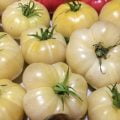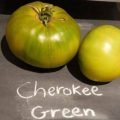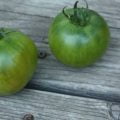For a species that has become habituated to shuttling food around at great distances, the concept of “microclimates” is seemingly lost on modern humans, as is the immense opportunity it provides for growers. The fact that we need more variety in our diets from local and sustainable sources is even more important in the world today. Microclimates are a big part of the answer! These unique growing areas have, and ever will be, maximum relevance to community well-being, profitability and resilience because they offer a local hot spot of edible biodiversity potential in any region by allowing more food plant varieties to survive and thrive.
Why We Should Grow Edible Biodiversity
Edible biodiversity is all the plants, animals and more that can be grown on a farm or found in the wild and are edible and useful for humans. Integrating edible biodiversity into our communities is of great benefit to us all. When we grow more edible biodiversity in communities, there is an increase in locally available and nutrient-dense foods. In addition, farmers and market gardens will see new profitable niches in the increased diversity of perennial crops that survive in unique microclimates. Furthermore, humans, in cities, suburbs and farms alike, are dependent on food for socio-economic prosperity, and agro-biodiversity (all the variety of cultivated food) has always been a cornerstone of our societal resilience. An understanding of the benefits of community edible landscaping, local agriculture, and biodiversity is a starting point for re-evaluating our appreciation of microclimates and the subtle shifts in climate that improve perennial plant survival and success. For gardeners, landscapers and farmers, microclimates offer a window into grower opportunity.

Climate
Climate is a determining factor of regional agricultural diversity. This can be simplified by understanding the effect of moisture, temperature, and geomorphic and ecological variations, which work as a whole to define a region’s climate. Yes, we can always add to local and regional precipitation with irrigation systems, but nothing can replace the benefit of routine rain. At the same time, too much rain can be very problematic, causing flooding. Or certain weather conditions can result in hail ruining crop leaves or even poor air flow promoting diseases, such as mildews and moulds. Temperature is also important, including the spring frost that kills tree blossoms, or the fall temperatures that might alter fruit quality from early frosts. Extreme heat is as important as cold: Hot and dry summers can stunt plants, and drought can result in total crop loss.
Macro-Climate Influences
Certainly, larger geographic features such as lakes, oceans and rivers, as well as mountains, valleys and flood plains, will influence your regional climate. Indeed, this is why you find similar hardiness zones (see below) in Halifax and London, Ontario, which have lows of around –17°C to –23°C, because they are both influenced by their proximity to large bodies of water (the Atlantic and the Great Lakes). On the other hand, it is considerably colder in Bancroft, Ontario, which is 45.05°N, than it is in Halifax, which is 44.64°N, even though they are on similar lines of latitude. This is because Bancroft is located at a higher elevation, near Algonquin Park, and is centrally located away from large bodies of water that might influence its climate (such as the Great Lakes or the St. Lawrence River). As soon as you move farther west to Georgian Bay and Lake Huron, and even go farther north in latitude to the city of Parry Sound (45.34°N), Ontario, you end up in a Zone 5a instead of Bancroft’s 4a.
Talking Perennials
When we talk about perennial plants, we mean those that survive winter and keep maturing over many years, producing fruits, herbs, berries and roots. Some may die back partially or go dormant, but they return each year from living perennial roots and stems (not from new seeds).
Many important perennials exist for home growers, homesteads and farms. These include the notorious apple, the well-loved strawberry, the famed grape, the fragrant lavender and the early rhubarb. Many factors will influence perennial planting success, such as average precipitation, air flow and other weather phenomena, as well as local soil types and the quality of the initial transplant (whether they are infected with a disease, for instance). However, all of the above pale in comparison when judging what leads to perennial plant success compared with the simple question of cold hardiness.
Potential Perennial Agro-Biodiversity
Of particular importance for perennial agriculture and the growing movement toward edible ecosystem design (whether a food forest homestead or a commercial diversified orchard) is average winter temperatures and especially the average winter extreme low. I consider this average extreme low, whether –15°C (common in Truro, Nova Scotia) or –35°C (Ottawa), to be the most significant factor in perennial agro-biodiversity distribution. Yet there is an another equally important factor, namely whether growers identify the microclimates available in their region and maximize them. To do this, we better look at the concept of cold hardiness.
Cold Hardiness
Cold hardiness is a plant’s ability to resist extreme temperatures and survive. For instance, most Asian Pears I have tried to grow on my farm (which can experience lows of -35 C in winter) have died, however, I can get some varieties to grow because they are cold hardy. In a similar respect, most sweet cherries are less cold hardy than sour cherries, hence the work to make sour cherries sweeter by the University of Saskatchewan. Other factors are important in determining perennial plant success, but the extreme winter low of an area and the plant’s cold hardiness is the ultimate deal-breaker in terms of what you can grow and what you can’t grow outside in a garden, orchard or edible ecosystem.

Hardiness Zones
The concept of hardiness zones was developed by the USDA and has been adapted to varying degrees by other countries. It can be found on maps of Canada, the United States and Mexico. Hardiness zones vary from 0 to 13 and tell us what the average winter extreme low is and how that relates to plant survival. The importance of hardiness zones increases as you go north in latitude and up in elevation. This is partially because the limits on what can grow makes growers value a fine tuning of their understanding of potential edible diversity for their property or farm. As you go farther north in latitude, or mount higher in elevation, the climates are colder on average and will have a lower average winter extreme.
Hardiness zones in North America go from the very coldest zone, Zone 0a in the Canadian Arctic, to Zone 13b in Puerto Rico. Although hardiness zones go from 0 to 13, they are also divided further into subgroups designated by “a” and “b” (i.e., Zone 4a, Zone 4b, Zone 5a, Zone 5b, and so on), with “a” being the colder subcategory. It is important to see how the gradient of hardiness zones changes not just latitudinally from the equator, north or south toward the poles, but also in mountainous regions. For example, where I live now in the Ottawa Valley, we have hardiness zones of 4a and 4b at a latitude of about 45°N. However, we can also see hardiness zones of 4a to 5b in much of northern New Mexico, where I grew up, even though New Mexico is only at 35°N. The reason becomes evident when we look at the city of Santa Fe, for instance, which has a growing local food economy, and many of these farms are over 7,000 feet above sea level.
Microclimates and Their Effect on Regional and Local Hardiness
Within any region in the world, one can usually classify their property as falling within a particular hardiness zone (like Zone 4). Sometimes there are variations within the landscape, however, and we can find sites with more variation than what may show up on a map. Zones 3b, 4a and 4b, for example, might be found on one piece of land classified as Zone 4a. What makes this difference to hardiness zones is a microclimate effect caused by a combination of different regional, local and site-specific features, such as the microclimate that would occur on a property nestled beside a large lake, on the sheltered side of a ridge, and exposed to the southern sun with protection by a planted windbreak.
What Is a Microclimate?
The term microclimate is quite subjective, and like ecosystems, it is scalable and relative to whom it concerns. For an insect living inside a pitcher plant, the small rooms inside have its own microclimate; for the bacteria living in the soil, the aggregate has its own microclimate; and for the colony of fungi inside a hollow decaying log, there is a specific microclimate. Yet, to the wolf that walks across hundreds of kilometres of forest, these microclimates are less significant. To the wolf, the warm south-facing ridge of an escarpment represents a landscape-scale microclimate that is quite relevant. It was equally relevant to the cave-dwelling humans of our past who made their homes in sheltered cliff sides, and it is also relevant today to the native plants that grow in some areas of a landscape and not others. There are many factors that can affect these landscape-scale microclimates, namely elevation, solar exposure, shelter, proximity to water, and vegetation density, to name a few.
For instance, as you walk up a hillside and mount in elevation, the plant communities change. There is a subtle shift in microclimate up the mountain, just as there is a shift on the northern or southern exposure, since one side receives more solar gain in the day and more potential to hold that warmth in rocks and vegetation over the nighttime. Similarly, communities on the leeward side of a ridge, as opposed to the windward side, are sheltered and receive less wind chill. Another form of shelter comes from snow cover: Areas that have more snow, or ecologies and landscapes that hold snow on the land, will also improve winter survival. At the same time, areas that have proximity to water bodies, such as lakes and rivers, may receive the moderating effect of the water. This can also be understood on a micro-scale, such as features like a farm pond or stream.
In general, moisture helps prevent frosts, since the cold goes to cooling the water in the soil and air before freezing the water in plant tissue. In a similar line of thought, we can see that areas with more vegetation also protect and shelter to create microclimates on their leeward side or underneath their canopy, and more vegetation means more localized moisture, which can help modify temperature swings. Landscapes that have living, growing plants, and a diversity of layered living and growing plants, will change the microclimate of an area. Not only do plants serve to block wind and shelter areas, but they also are massive holders and cyclers of moisture. This can modify your microclimate by both protecting fewer hardy plants with physical barriers as well as creating a local atmosphere that has more moisture available. A fruit tree that is less hardy is more likely to survive in a field that is managed as a food forest with many trees growing in it, than as a single row of trees in a big field of annual crop that is bare all winter. The bare field holds less moisture and provides very little protection. Similarly, more soil moisture can help modify these temperature extremes as well.
Understanding hardiness zones and your landscape’s microclimates is the key to discovering which amazing fruits, nuts, berries and herbs can be grown! Maximizing these different varieties in a landscape is called “ecosystem design.”
Learn more about ecosystem design at ecosystemu.com. Access the edible-property design course free with the promo code “Harrowsmith.”
*

Case Study: East Coast Opportunities
Now that we understand climate and microclimate, we want to see the opportunity in the landscape. We are going to focus our case study in northeastern Canada. In these regions stretching from Montreal and up the St. Lawrence Seaway to Nova Scotia and Newfoundland, we have immense opportunity.
So where can we find different microclimates in Canada? For starters, all around the Great Lakes and along most coastal areas there is a milder climate compared with more inland “continental” areas or areas at higher elevations. In the east, this includes the climate modification of bodies of water such as Lake Saint-Jean in Quebec; the St. Lawrence Seaway and St. Lawrence River in Ontario and Quebec; the Bay of Fundy in Nova Scotia and New Brunswick; and the Northumberland Strait near Prince Edward Island. The Annapolis Valley in Nova Scotia is a winning growing area, since it is not only in a milder climate thanks to its proximity to large bodies of water like the Bay of Fundy, but it also has a valley protecting it from harsh weather on both sides, plus it has good soil, to boot.
What these landscapes represent is opportunity! Opportunity to grow more edible plants in your yard to improve food security, and to diversify your farm profitability by growing unique plants in your area. They also offer the opportunity to create resilience for society by diversifying our agricultural landscape so it is less vulnerable to insect or disease epidemics as well as natural disasters. A home gardener can plant an edible hedge with more varieties of fruit if they analyze their yard for microclimate. A farmer can grow crops that would otherwise be imported by understanding unique climate variations on their land. Entire regions, like Nova Scotia, can increasingly value unique landscapes with good soil and microclimates to maximize the resilience with diversity while improving their community’s food security.
Zach is an educator, designer and grower who specializes in Edible Ecosystem Design. He consults widely with homes, farms, colleges, schools and municipalities across Canada and the United States, and through many biomes from Guatemala and South Africa to the Yukon and Mongolia.
Zach manages an award-winning farm with diversified food forest products, heirloom garlic, and a hardy tree nursery. His innovations have won three provincial awards and are featured in his first book: The Permaculture Market Garden.
Zach is the director of the Ecosystem Solution Institute, which is dedicated to the education, propagation and inspiration of ecosystem solutions for land use transition. The Institute oversees pathbreaking education sites, including an edible botanical garden near Ottawa, Ontario, and a suburban food forest in Winnipeg, Manitoba. Zach is passionate about how small actions - strategically linked - can make big change. His inspiring and empowering vision is presented in his latest book: The Edible Ecosystem Solution.














